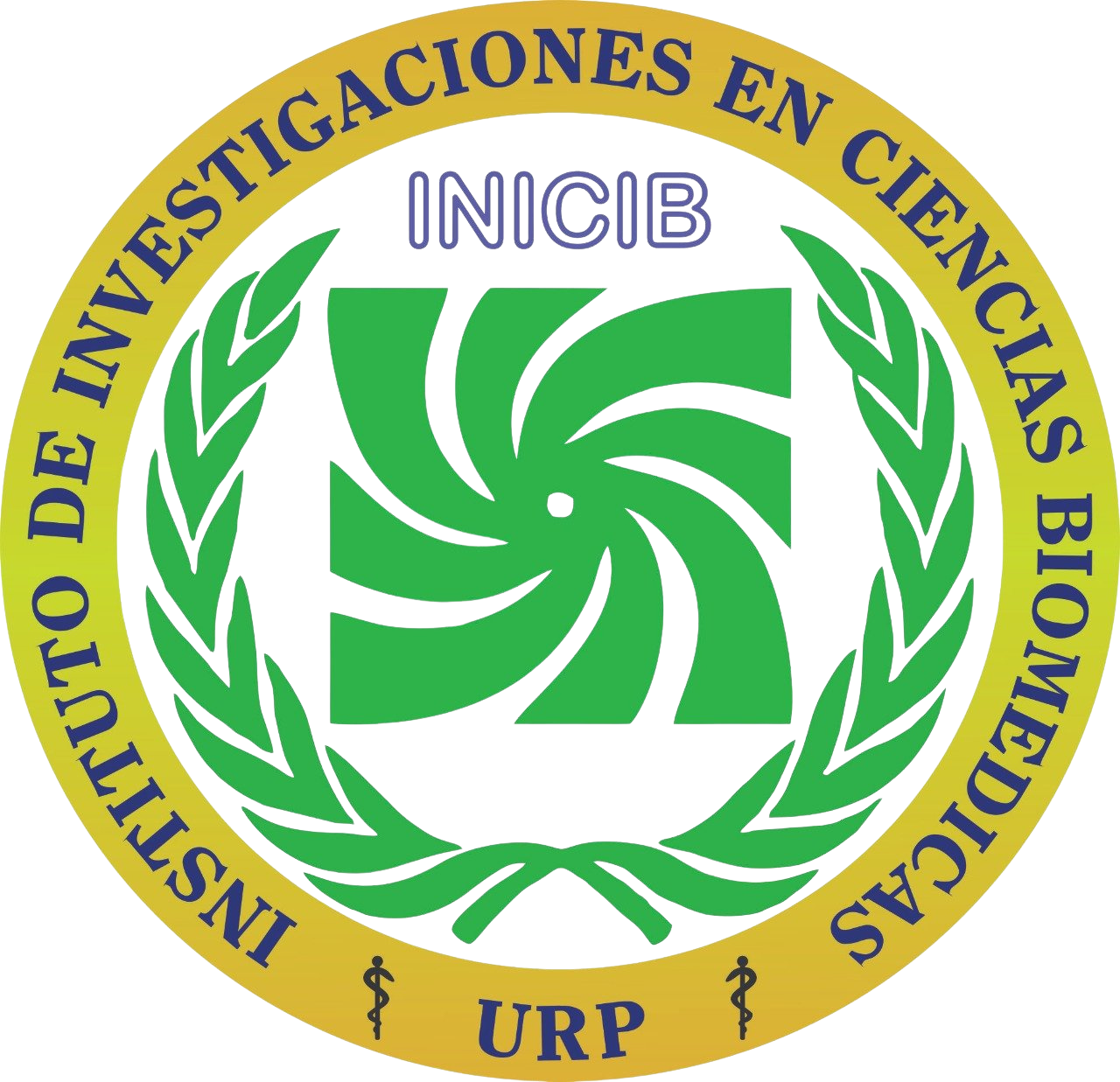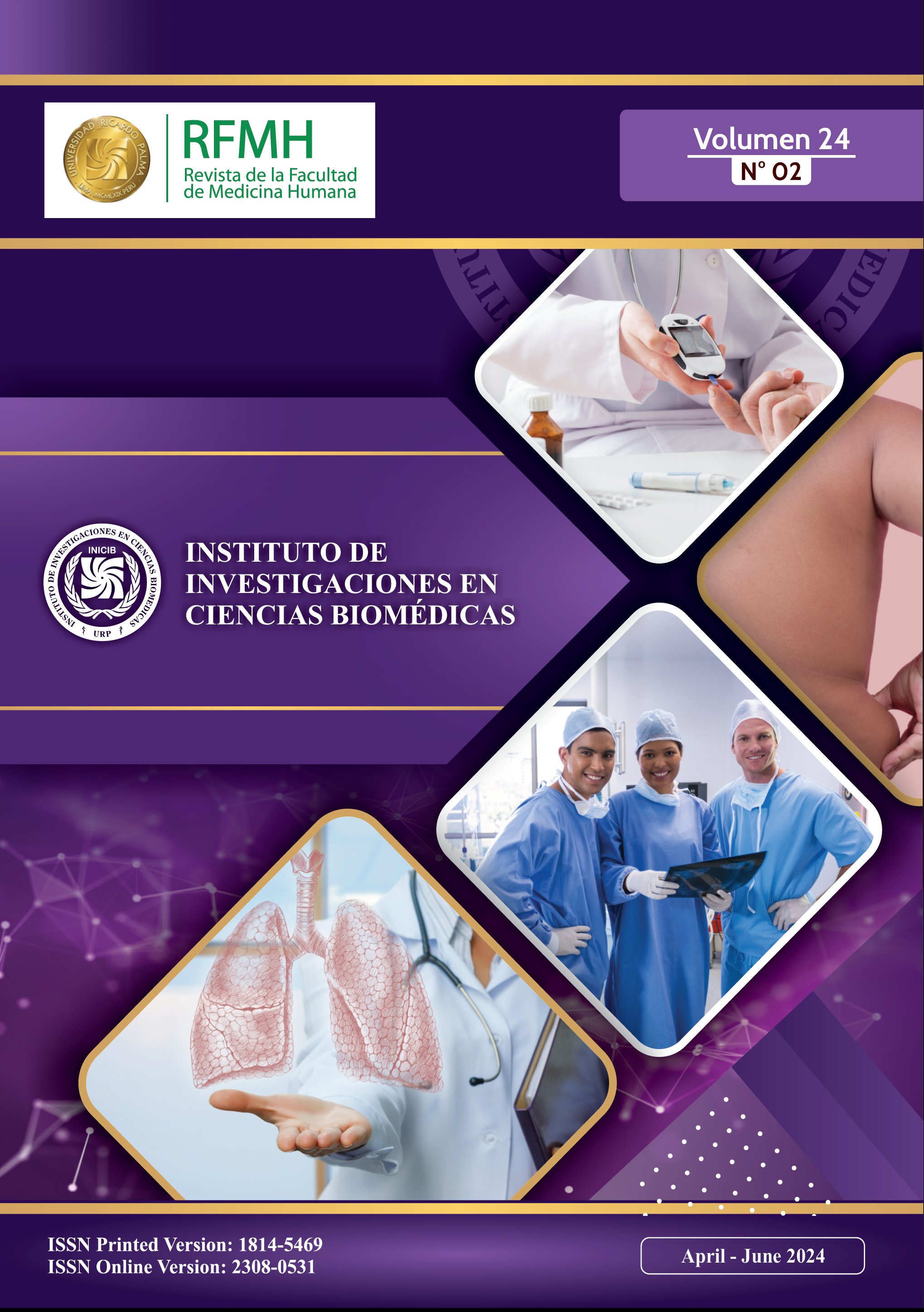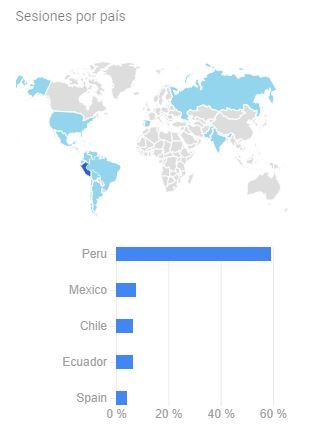CONCORDANCE BETWEEN TWO QUESTIONARIES FOR THE DIAGNOSIS OF DIGITAL EYE STRAIN IN STUDENTS OF A UNIVERSITY IN PERU
CONCORDANCIA ENTRE DOS ENCUESTAS PARA EL DIAGNÓSTICO DE FATIGA VISUAL DIGITAL EN ESTUDIANTES DE UNA UNIVERSIDAD EN PERÚ
DOI:
https://doi.org/10.25176/RFMH.v23i4.5765Keywords:
Asthenopia, Self Report, Vision Screening, Surveys and Questionnaires, Eye Manifestations(MeSH)Abstract
Objective: Obtain the frequency of digital eye strain (DES) between two questionnaires among students of a private university in Lima, Peru; in order to estimate the degree of concordance between both methods. Methods: A cross-sectional study was carried out in a sample of 345 participants over 18 years of age, students at a university in Lima, Peru, and who completed the data collection instrument. The two methods used to measure DES were the Hayes questionnaire, which defines a positive case for DES with a score equal to or greater than 20; and the CVS-Q questionnaire of Seguí, which defines a score greater than 6 as positive for DES. Cohen's kappa coefficient was estimated with its 95% confidence interval to measure global concordance degree and by groups. Results: The Hayes questionnaire identified 167 (48.4%) participants with a presumptive diagnosis of DES, the Seguí questionnaire identified 247 (71.6%) students. In the concordance analysis, Cohen's Kappa coefficient was 0.45 (95% CI; 0.37 – 0.53) (p < 0.01) in the global analysis, considered as moderate. Conclusion: The degree of concordance between both methods was moderate, the Seguí instrument identified a higher proportion of university students with FVD.
Downloads
References
BIBLIOGRAFÍA:
Sheppard AL, Wolffsohn JS. Digital eye strain: prevalence, measurement and amelioration. BMJ Open Ophthalmology 2018;3:e000146. doi: 10.1136/bmjophth-2018-000146.
Bali J, Neeraj N, Bali R. Computer vision syndrome: A review. Journal of Clinical Ophthalmology and Research. 2014;2(1):61. doi: 10.4103/2320-3897.122661.
Rosenfield M. Computer vision syndrome (A.K.A. digital eye strain). Optometry in Practice. 2016; 17:1–10.
Portello JK, Rosenfield M, Bababekova Y, Estrada JM, Leon A. Computer-related visual symptoms in office workers. Ophthalmic Physiol Opt. 2012; 32(5):375-82. doi: 10.1111/j.1475-1313.2012.00925.x.
Kim J, Hwang Y, Kang S, Kim M, Kim TS, Kim J, et al. Association between Exposure to Smartphones and Ocular Health in Adolescents. Ophthalmic Epidemiol. 2016 3;23(4):269–76.
Hayes JR, Sheedy JE, Stelmack JA, Heaney CA. Computer use, symptoms, and quality of life. Optom Vis Sci. 2007; 84(8):738-44. doi: 10.1097/OPX.0b013e31812f7546.
Jain R, Ahmed Khan A, Hegde V, Bappal A, S R. Digital eye strain among undergraduate medical students in a tertiary eye care hospital of south India – A questionnaire based study. Indian Journal of Clinical and Experimental Ophthalmology. 2019; 5(2):208–10.
Seguí MDM, Cabrero-García J, Crespo A, Verdú J, Ronda E. A reliable and valid questionnaire was developed to measure computer vision syndrome at the workplace. J Clin Epidemiol. 2015;68(6): 662–73.
Cantó-Sancho N, Ronda E, Cabrero-García J, Casati S, Carta A, Porru S, et al. Rasch-Validated Italian Scale for Diagnosing Digital Eye Strain: The Computer Vision Syndrome Questionnaire IT©. Int J Environ Res Public Health. 2022; 19(8):4506.
Mowatt L, Gordon C, Santosh ABR, Jones T. Computer vision syndrome and ergonomic practices among undergraduate university students. Int J Clin Pract. 2018; 72(1).
Maguiña C, Gastelo R, Tequen A. El nuevo Coronavirus y la pandemia del Covid-19. Revista Medica Herediana. 2020; 31(2):125–31.
Hussaindeen JR, Gopalakrishnan A, Sivaraman V, Swaminathan M. Managing the myopia epidemic and digital eye strain post COVID-19 pandemic - What eye care practitioners need to know and implement? Indian J Ophthalmol. 2020 Aug; 68(8):1710–2.
Fernández-Villacorta D, Soriano-Moreno AN, Gálvez-Olortegui T, Agui-Santivañez N, Soriano-Moreno DR, Benites-Zapata VA. Síndrome visual informático en estudiantes universitarios de posgrado de una universidad privada de Lima, Perú. Arch Soc Esp Oftalmol. 2021; 96(10):515–20.
Landis J KG. The measurement of observer agreement for categorical data. Biometrics. 1977; 33(1):159-74.
Gammoh Y. Digital Eye Strain and Its Risk Factors Among a University Student Population in Jordan: A Cross-Sectional Study. Cureus. 2021;13(2):e13575. doi: 10.7759/cureus.13575.
Fernandez DE. Prevalencia del síndrome visual informático en estudiantes universitarios de postgrado de una universidad privada Lima [tesis]. Lima: Universidad Peruana Unión, Facultad de medicina humana; 2019.
Wangsan K, Upaphong P, Assavanopakun P, Sapbamrer R, Sirikul W, Kitro A, et al. Self-Reported Computer Vision Syndrome among Thai University Students in Virtual Classrooms during the COVID-19 Pandemic: Prevalence and Associated Factors. Int J Environ Res Public Health. 2022; 19(7):3996.
Mohan A, Sen P, Shah C, Jain E, Jain S. Prevalence and risk factor assessment of digital eye strain among children using online e-learning during the COVID-19 pandemic: Digital eye strain among kids (DESK study-1). Indian J Ophthalmol. 2021;69(1):140.
Kaur K, Gurnani B, Nayak S, Deori N, Kaur S, Jethani J, et al. Digital Eye Strain- A Comprehensive Review. Ophthalmol Ther. 2022; 11(5):1655–80.
Coles‐brennan C, Sulley A, Young G. Management of digital eye strain. Clin Exp Optom. 2019 Jan 1;102(1):18–29.

Downloads
Published
How to Cite
Issue
Section
License
Copyright (c) 2023 Revista de la Facultad de Medicina Humana

This work is licensed under a Creative Commons Attribution 4.0 International License.


































